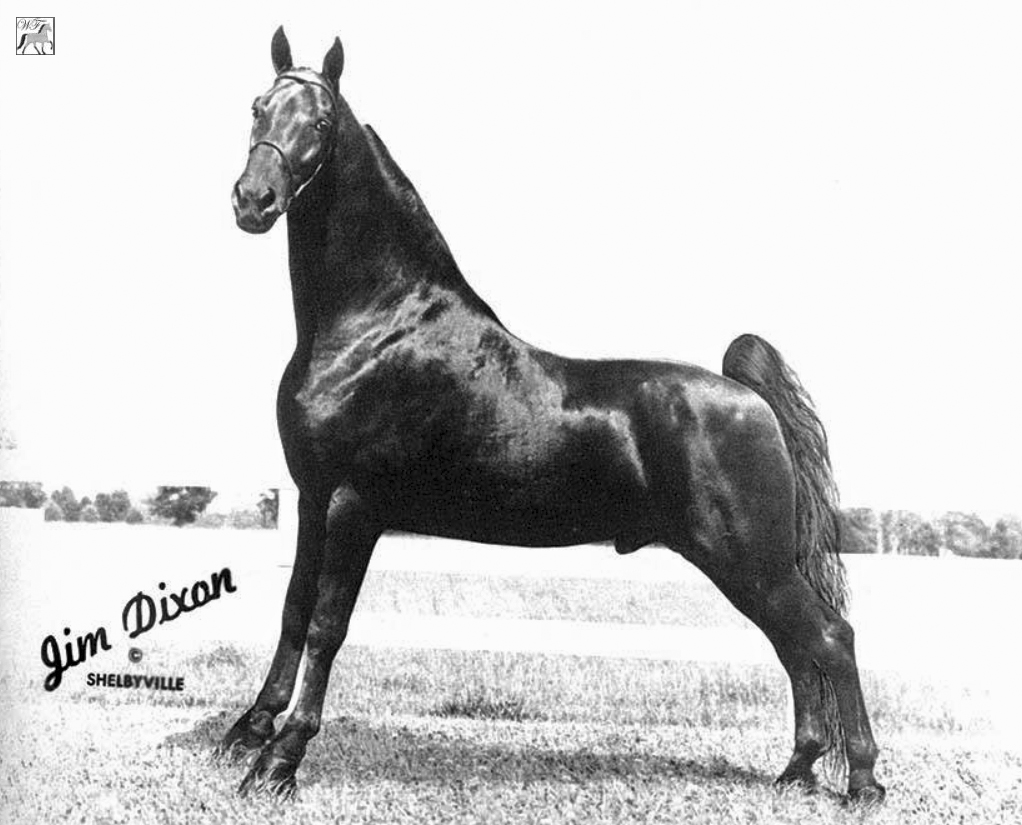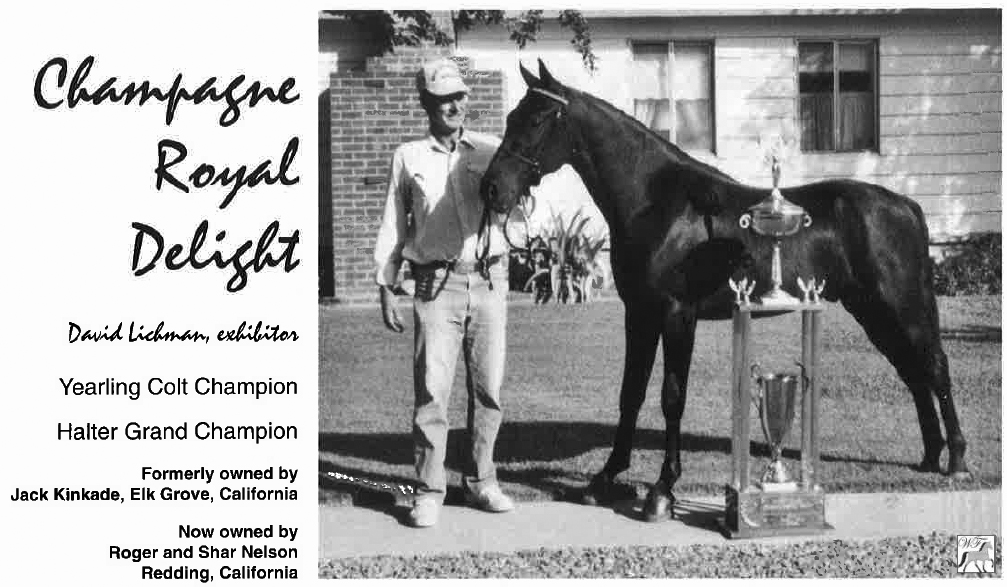|
A Horse
of A Different Color
Reprinted with permission. By
Bea Kinkade.
© Copyright 1999,
Voice of the Tennessee Walking Horse, Lewisburg, Tennessee
...
Champagne Lady had proved herself in the show ring,
but would she pass on her great abilities when she retired
to become a broodmare? Would she pass on her unusual color?...
Meanwhile she had been bred back to
Pride Of Midnight
and April, 1979 delivered a black stallion, Pride's
Champagne...
Meanwhile, the Greens had put "the
greatest horse they'd ever raised," (their very words),
Pride's Champagne, in training. Their hope, faith, time
and belief were swept away when the two-year old colt was
maliciously injured, during the night, just five days before
his show ring debut.
Going against three veterinary
advisors, including the insurance vet, Kelly and Diane refused
to put the horse down; pleading with Dr. Prince of Winchester,
Tennessee, to work with Auburn University to save him. Reluctantly,
Dr. Prince agreed to try, and kept the horse for almost
a year. Pride's Champagne came out of the tragedy terribly
blemished and scarred for life, but alive. And miracle of
miracles - he was sound!
Pride's Champagne was solid
black, with a beautiful head and long neck. He was 16.2
hands and could do a perfect four-beat running walk. He
was alive and well, but would never grace the show ring.
This is where the Kinkades enter the story. In 1983
my husband Jack and I bought Pride's Champagne and had him
shipped to California. We had been looking for an outstanding
stallion since our great Go Boy's Fancy Pants died. Pride's
Champagne was exactly what we wanted. Color was definitely
not a consideration. Jack and I have been in the walking
horse business most of our lives. Gaits, conformation, bloodlines,
and many other factors have always been more important to
us than color.
We bred Pride's Champagne to 33 outside
mares in the 1983/1984 season. The next year, when his foals
started to arrive, I noticed several were born with dark
blue eyes that later turned brown. In talking to Diane,
and hearing comments from people who had seen Champagne
Lady, I started to wonder if her unique color would pop
up in later generations. [The
champagne gene is now accepted to be a dominant gene, and
can not be hidden.] I
wanted to breed to palomino or cremello mares to see if
Pride's Champagne carried the "champagne" color
gene. These colors are not very common in walking horses,
so it was hard locating mares. Finally a dark palomino mare
was bred to him. The owner phoned to say the mare lost twin
foals at about ten months. One was black/bay and the other
was a very strange color; like nothing she'd ever seen. [The
foal could have been a buckskin, but not a champagne.]
Sometime in 1984 Diane Green
called. She said she had sold all her broodmares except
Champagne Lady. The mare had been bred a couple of times
but hadn't foaled since 1980, when she had the filly, Champagne
Copy. Like many others, I really wanted the mare but just
couldn't afford her at the time. Aside from the old mare's
outstanding ability, I was becoming more and more interested
in trying to breed these amazing-colored horses, and nothing
would have been better than owning the originator of it
all.
In November 1985 a black Senator mare had a
buckskin colt by Pride's Champagne. Close, but not what
I was looking for. It was then I decided that I wanted a
champagne-colored stallion out of old Champagne Lady or
out of her daughter, Champagne Copy. I hoped to line-breed
him to Pride's Champagne daughters and granddaughters. By
this time, we had a great selection of these outstanding
mares in our area.
About that time, the opportunity
arose to send Pride's Champagne to Tennessee, to stand at
public service. We knew the horse would be well cared for,
and it would give him an opportunity to prove what he could
produce - breeding him to some of the best mares in the
heart of walking horse country. We thought he deserved that
chance. And we were right. Pride's Champagne has sired many
outstanding foals in Tennessee, first at William Pennington's
Stable and now at Billy Gray's Sand Creek Farms in Shelbyville.
|



